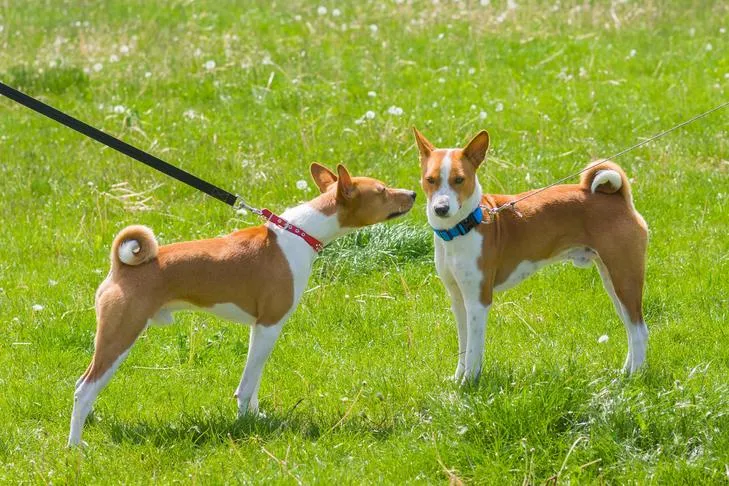Walking your dog should be an enjoyable experience for both of you, a time for fresh air and exploration. However, many dog owners find themselves in a constant tug-of-war, with their furry friend pulling relentlessly on the leash. This common frustration can turn a relaxing stroll into a stressful struggle. It’s not only uncomfortable but can also be unsafe, potentially leading to injuries or losing control of your dog in public spaces. Fortunately, teaching your dog proper leash etiquette is entirely achievable. How to train your dog not to pull the leash is a key skill for responsible dog ownership.
Leash pulling is a widespread issue, yet simple techniques and adjustments to your own behavior can make a significant difference. By consistently applying these expert tips, you and your canine companion will soon be enjoying harmonious walks, with your dog politely walking by your side instead of dragging you down the street.
1. Always Reward Good Leash Behavior
Never underestimate the power of positive reinforcement. Dogs are more likely to repeat behaviors that earn them a reward, whether that’s a tasty treat, a belly rub, or even the chance to sniff something interesting. If you only focus on correcting undesirable actions and take good behavior for granted, your dog may seek attention or rewards through less appropriate means.
Whenever your dog walks politely on the lead, make sure to reinforce that behavior with a reward. Carry treats on your walks, or be ready with enthusiastic praise and gentle pets. Don’t be shy about showing your appreciation for their good choices. In the initial stages of training, reward frequently and generously. As your dog’s skills improve, you can gradually reduce the frequency of treats and substitute them with “life rewards,” such as a moment to explore a tree trunk or a controlled greeting with another dog.
2. Never Let Your Dog Walk When They Are Pulling
The primary motivation for your dog pulling is usually to get where they want to go faster. If you allow them to continue moving forward while they are pulling, you are inadvertently rewarding the very behavior you want to stop. Since dogs repeat rewarded actions, this will only exacerbate the leash pulling in the long run. Therefore, it’s crucial never to walk when your dog is applying tension to the lead. The moment your dog pulls, stop completely, plant your feet firmly, and wait. Wait for your dog to either return to your side or for the tension on the leash to loosen.
 Basenjis meeting in a field outdoors, one on leash.
Basenjis meeting in a field outdoors, one on leash.
3. Wait for a Loose Leash Before You Walk
If you stop walking when your dog pulls, how do you know when it’s okay to resume? The key is to wait for a slack leash. It should hang in a gentle J-shape, indicating there’s no tension, and your dog should ideally turn their attention back to you. Initially, this might take some patience, but your dog will eventually look back to understand why you’ve stopped. The instant they do, offer praise and a treat at your side, then continue your walk. At first, you might find yourself stopping and starting every few steps, but your dog will quickly learn that pulling brings the walk to a halt, while a loose leash allows for continuous movement. This method is fundamental to teach dog not to pull on lead.
4. Incorporate Life Rewards on Your Walk
Walks should be a rich and engaging experience for your dog, offering not just a chance for potty breaks but also physical exercise and mental stimulation. When you’re focusing on training your dog not to pull, it can sometimes feel less enjoyable for both of you. A great way to enhance both training and your dog’s enjoyment is by incorporating “life rewards” for following the rules. These are everyday things your dog loves, like a good sniff of a bush or a quick greeting with a friendly stranger. For example, if your dog walks 10 feet without pulling, release them to sniff for a few minutes. These bonus rewards genuinely convince your dog that polite walking pays off.
5. Walk at a Good Pace
Often, humans walk at a much slower pace than dogs naturally prefer. Even small toy breeds can have a quicker stride than you might expect. This difference in pace is one reason dogs tend to pull – they want to get moving! To keep your dog more engaged and less inclined to pull, choose a walking pace that is comfortable and brisk for both of you. While you can certainly train your dog to match your exact speed, a quicker pace during the initial training phases can make it easier for them to learn not to pull on the lead.
6. Be Consistent With Your No-Pulling Rule
It can be very tempting to let your dog pull when you’re in a rush – perhaps you’re late or it’s freezing outside, and you just want to get the potty break over with. However, consistency is paramount with the no-pulling rule, regardless of the circumstances. Any time you allow your dog to pull, you risk undoing previous training and effectively setting yourselves back to square one. Until your dog reliably walks with a loose leash for more than a few feet at a time, consider having them do their business in the yard or at the curb, and reserve walks for dedicated training sessions when you have ample time to be consistent.
 Beagle pulling on the leash to sniff while on a walk outdoors.
Beagle pulling on the leash to sniff while on a walk outdoors.
7. Keep Training Sessions Short and Fun
Working with a determined leash puller can be frustrating, especially in the beginning when you might not get further than your driveway. Instead of pushing your dog (and yourself) until both of you are feeling irritated by a lack of progress, keep training sessions short, positive, and upbeat. Puppies, in particular, have very short attention spans, and asking too much too soon will rarely yield positive results. Remember, your objective isn’t to cover a certain distance; it’s to walk with a loose leash, even if that only means reaching the house next door.
8. Be Interesting and Engaging on Walks
For dogs, the world is an incredibly stimulating place, filled with new sights, sounds, and most notably, smells. This means there’s a constant stream of distractions vying for your dog’s attention, enticing them to drag you along. If you’re absorbed in your phone or otherwise disengaged, there’s little reason for your dog to focus on you. However, if you make yourself interesting and worth paying attention to, your dog will be much more likely to follow your lead. Talk to your dog, take spontaneous training breaks, initiate a quick game, or change directions. Keep them guessing about what you’ll do next to hold their focus. This will help you how to stop a dog from pulling while walking.
9. Stay Calm
 Cavalier King Charles Spaniel on a lead outdoors.
Cavalier King Charles Spaniel on a lead outdoors.
Whether it’s the excitement of seeing a favorite person or the approach of another barking dog, walks can present many emotionally charged situations. Regardless of whether a situation is exciting or frightening for your dog (and for you), maintaining your composure is essential. Dogs are highly perceptive of human emotions, and your mood can travel down the leash, either escalating their excitement or intensifying their anxiety. To help your dog stay calm, you must remain calm yourself. Show your dog that there’s nothing to be overly excited or worried about. The more relaxed your dog is, the better they will be able to listen to your cues and behave appropriately.
10. Engage Your Dog In Distracting Situations
When faced with distractions like other dogs or squirrels, it’s easy for your dog to forget their leash manners and start pulling. The same applies to things your dog finds suspicious or unsettling, such as unfamiliar strangers. Your dog might pull to investigate or pull to retreat in the opposite direction, and either way, good leash etiquette can quickly be forgotten.
To help your dog navigate distractions, shift their focus back to you. Calmly offer treats or engage them in a simple game. For instance, ask for a how to teach puppy how to sit or a hand target. These exercises are straightforward for your dog and will keep them engaged until the distraction passes. You can also teach your dog the “watch me” cue to establish eye contact and control where their attention is directed. The key is to be proactive – grab your dog’s attention before they even spot the distraction, and with practice, they may not even notice it at all.
Mastering loose-leash walking requires patience, consistency, and understanding your dog’s motivations. By implementing these ten strategies, you’re not just teaching your dog a skill; you’re building a stronger bond and ensuring that walks become a positive, stress-free experience for both of you. Remember that every dog learns at their own pace, so celebrate small victories and stay committed to the process. For additional support or expert advice from experienced trainers, consider consulting reputable dog training helplines or programs.
